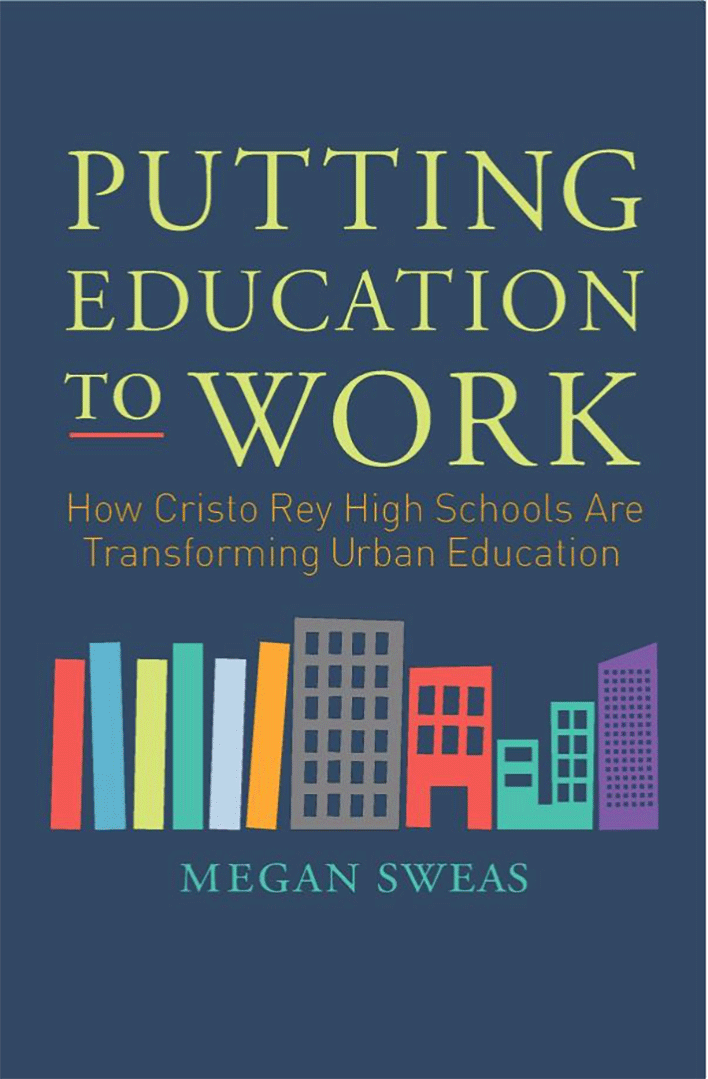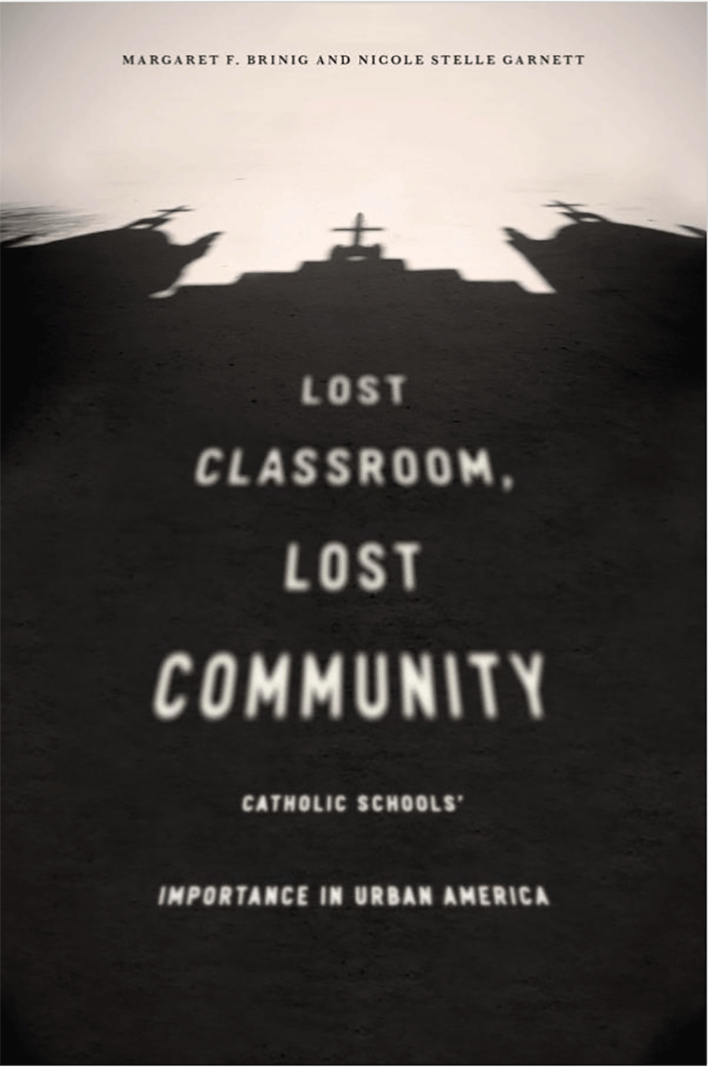Over the past hundred years, urban K-12 Catholic schools have educated millions of underserved boys and girls, from European immigrants fighting poverty and nativist bigotry to working-class children of the baby boom to the primarily African-American and Latino families who are today’s urban poor.
Despite their service to the nation and to individual children, these schools have suffered a long, steep decline, with approximately half as many Catholic schools in existence today (serving about half as many students) as at their mid-1960s peak. Changing city demographics, shrinking numbers of nuns and priests, upward pressure on salaries, competition from high-performing charter schools, aging facilities, and church scandals have rendered many urban Catholic schools financially unsustainable.
Some might view this as a Catholic problem. In reality it is an urban education problem that should concern everyone. Catholic schools have a strong track record of helping disadvantaged populations learn skills, develop character, graduate from high school at better rates than neighborhood peers, and persist in higher education. While urban charter schools are accomplishing outstanding results in many locations, long and expanding charter waitlists underscore their inability to grow fast enough to meet demand. The loss of Catholic schools diminishes the availability of educational options at a time when families are demonstrating their desire for more of them.
It turns out that this collapse affects not only educational outcomes, but civil society more broadly. As Notre Dame professors Margaret Brinig and Nicole Stelle Garnett write in Lost Classroom, Lost Community, “Catholic school closures precede elevated levels of crime and disorder and suppressed levels of social cohesion.”

That is, the urban Catholic schools that are now disappearing had social benefits beyond the classroom, extending to the whole neighborhood. As other observers have noted, Catholic schools have an unusual ability to build a community around a shared vision, helping reduce achievement gaps between students of different backgrounds. Lost Classroom, Lost Community buttresses this claim with rigorous research.
One reason for Catholic schools’ central importance to their communities is their longstanding presence. Ironically, the longevity of urban Catholic schools is also to blame for some of their problems. Put bluntly, the world—especially the urban education world—has changed dramatically in the last few decades, yet Catholic schools have grown sclerotic, failing to adapt to their new environment.
Typically, each school continues to be controlled by its local parish, with a priest overburdened by other responsibilities and possessing little to no K-12 training overseeing the institution and its countless components. The diocesan central office is not able to help. Too little has been done to build new pipelines of future teachers and principals. Too many important public-education advancements associated with standards, assessments, transparency, accountability, and technology have failed to permeate the walls of urban Catholic schooling.
These challenges are not limited to Catholic schools. Urban public school districts have also been stuck over the last generation. Despite staggering investments of time, money, effort, and talent, these behemoth organizations have barely improved. It appears that the slow accretion of a century’s worth of policies, practices, contracts, beliefs, habits, and more have fossilized them as well.
Civil society’s response to this impasse, charter schooling, has opened new public schools under fresh, often radically different, rules. Operating outside the old system, charter advocates have developed new school models, staffing plans, school calendars, human-capital pipelines, expectations, and much more. In city after city, charter-school students are learning considerably more than their district-school peers. The movement at large is allowing entrepreneurial individuals and organizations to replicate and expand successful ideas, develop new schools, and build the diversity of options from which families can choose.
One sobering finding of Lost Classroom, Lost Community, though, is that new charter schools do not compensate for the loss of social cohesion. Even if charter schools are academically high-performing, filling “both the physical and educational void” caused by Catholic school closures, they do not “appear to generate the same positive community benefits.” Though Brinig and Garnett are careful to note that charters may, over time, grow into this role, for now the trade of Catholic schools for charters isn’t an even swap for neighborhoods.

In the last several years, urban Catholic schooling has slowly begun learning chartering’s overarching lesson—that “new” may be necessary. In a growing number of cities, new Catholic schools are emerging, and existing Catholic schools are being reorganized into charter-like networks, such as ACE Academies, Phaedrus, Faith in the Future, and the Partnership for Inner-city Education. The Manhattan Institute’s Charles Sahm and Sol Stern call this the “quiet revolution in Catholic education.”
One outpost of this revolution is the subject of another new book: Putting Education to Work by Megan Sweas. Cristo Rey, the largest network of new-style independent Catholic high schools, opened its first school in Chicago nearly 20 years ago; the replication effort started a few years later. Today, the network has more than two dozen schools in 27 cities. Nearly all of its 9,000 students are children of color, and more than three quarters are from low-income families.
Cristo Rey is explicit about its focus on poor boys and girls; in the words of the network’s founder John Foley, “If you can afford to come here, then you can’t come.” The network’s “Mission Effectiveness Standards” require member schools to serve the poor exclusively. Cristo Rey denied the application of one potential campus because it planned to have a student body that was only 80 percent economically disadvantaged. Another school left the network because the local bishop didn’t want to deny a Catholic education to diocesan Catholics who weren’t low-income.
And though children of all faiths are welcome, the schools themselves must be Catholic. As Sweas writes, Catholicism forms the network’s belief system. A central conviction is that “all people have equal dignity as children of God” and that “every student is extraordinary and capable of extraordinary things.”
The most celebrated aspect of the Cristo Rey model is its innovative work-study program. Students work one day per week for an outside employer. They gain valuable practical experience and life lessons, and their earnings are used to offset school costs, keeping tuition affordable. About 2,000 companies have participated in the network’s program, and students earn more than $40 million annually. To further shore up its finances, the network has also prioritized school growth in states with private-school tax credits or public scholarships.
Cristo Rey embraces the new. Nearly all of its schools were freshly created; only a few were existing high schools that joined the network, and it now has a policy against any more such conversions. Its schools are operated outside of the traditional diocesan and parish structures. Local churches are involved—many Cristo Rey schools are sponsored by a religious congregation—but they don’t own the school, they support it.

Cristo Rey’s determination to start from scratch has enabled an array of innovations. Before a new school is launched, the network requires a full feasibility study, including proof that the local community can raise private funds and assemble a strong board. A nonprofit is brought in to recruit employers and place students. Students learn basic workplace skills like using Microsoft Excel, making professional small talk, and dressing appropriately. Schools keep detailed track of demographic, operations, financial, and student-performance metrics. Some Cristo Rey schools have lay leaders. One school even created a residential program.
In other words: These are not the Catholic schools of 1965.
In combination, Lost Classroom, Lost Community and Putting Education to Work compel supporters of Catholic education to grapple with the fundamental challenge that continuously tests the larger church: how to balance old and new.
The social capital that Catholic schools offer takes time to accrue, so it is often found in longstanding institutions. But the most promising development in urban Catholic education is the emergence of new urban Catholic schools that function outside of old systems.
There are several reasons to have faith that this tension can be resolved. First, new Catholic networks give every indication that they appreciate the importance of social capital. Second, though the schools and some of their practices may be new, their faith traditions are time-tested. Sweas quotes the president of Cristo Rey’s Houston campus: “It has been 473 years since the founding of the Jesuits, and 465 years since they opened their first school.”
Most importantly, these new schools, like the old ones, are centered on care for others. They have been built primarily to serve the disadvantaged. Sweas notes that numerous Cristo Rey employees interviewed for the book believed that “providence—or the Holy Spirit—brought them to the school” so they can help their fellow man.
It is the service ethic that might be the bridge between old and new in the world of Catholic education. Upon ascending to the papacy, Pope Francis said, “How I would love a church which is poor and for the poor.” In this regard, Catholic K-12 schools are leading the way.
